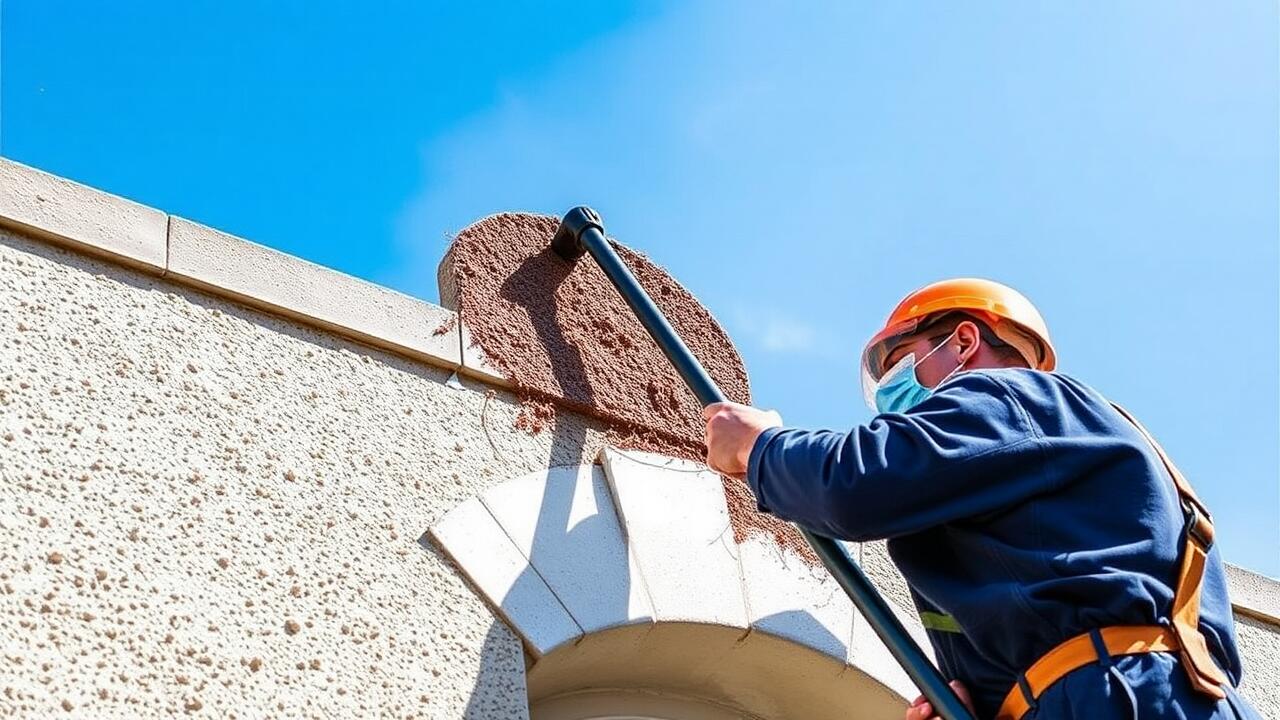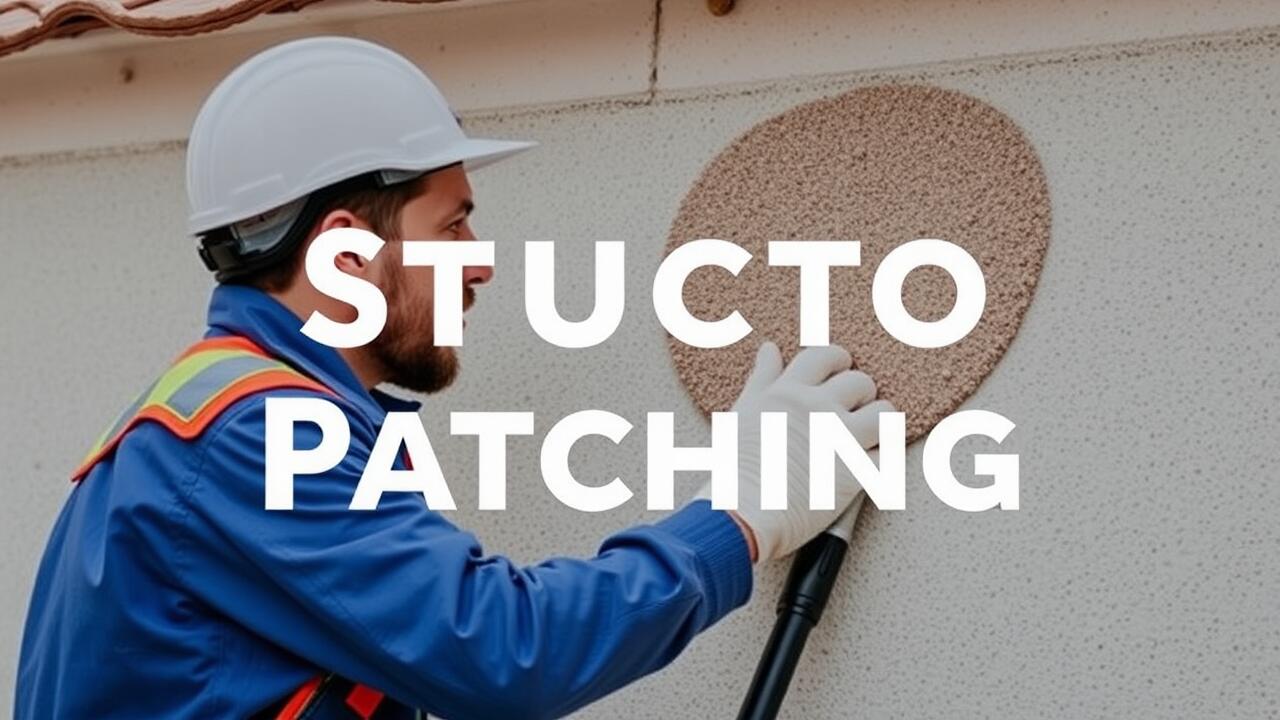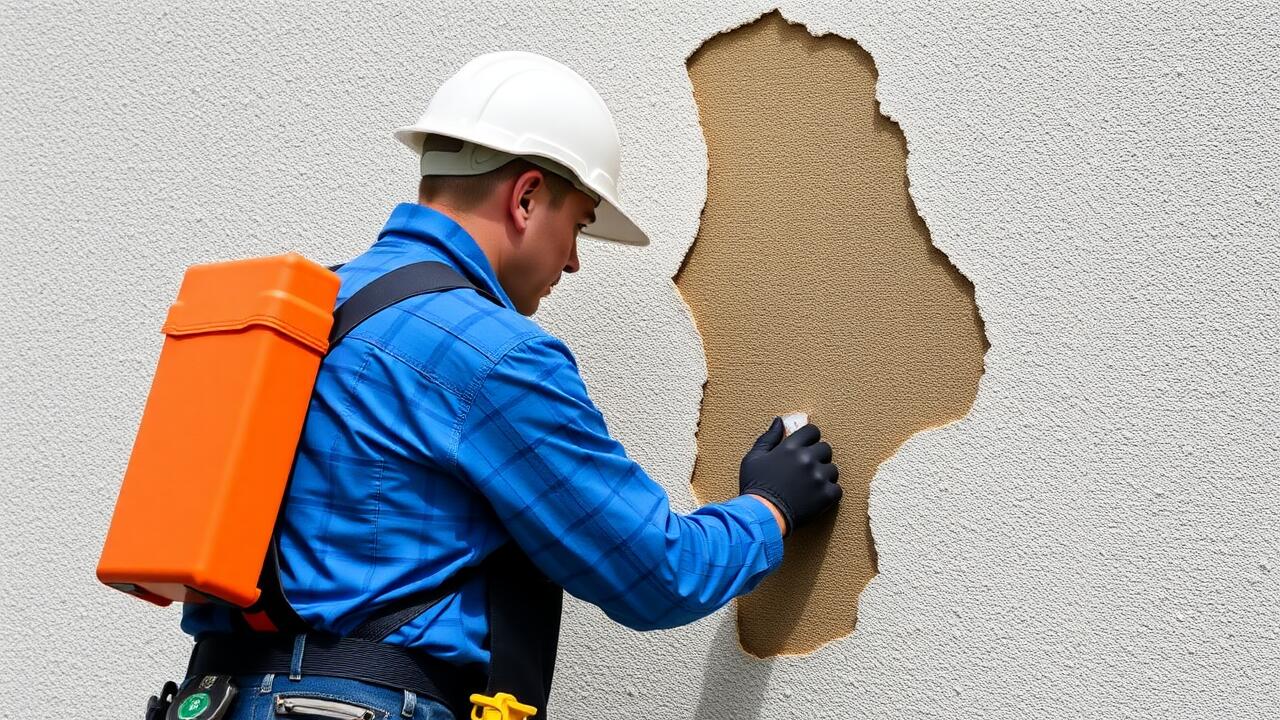
Curing Time for the Scratch Coat
Curing time for the scratch coat is crucial in the stucco application process. This initial layer typically requires a minimum of 24 to 48 hours to set properly. Adequate moisture must be maintained during this period to prevent shallow cracking or premature drying. In areas like Stucco Patching Chatsworth, Los Angeles, where temperatures can fluctuate, ensuring the material stays moist becomes even more critical.
The ambient conditions can significantly influence the curing time. High temperatures may expedite drying, while cooler, more humid conditions can extend the process. Monitoring the scratch coat regularly is essential. Understanding these variables can help achieve a solid foundation for the subsequent layers of stucco, ultimately leading to a more durable and aesthetically pleasing finish.
Importance of Proper Curing and Recommended Timeframes
Proper curing is essential for a successful scratch coat application. It allows the moisture within the scratch coat to evaporate at a controlled rate, which is crucial for achieving the right bond and strength. Insufficient curing can lead to cracks and delamination, compromising the overall integrity of the stucco system. For those in areas like Chatsworth, Los Angeles, understanding local climate conditions can also guide the curing process. Factors such as temperature and humidity play significant roles in how quickly a scratch coat sets and hardens.
Recommended curing time varies based on environmental conditions but typically ranges from 24 to 48 hours before applying the next coat. During this time, keeping the scratch coat moist without saturation is vital. Covering the patched area with a damp burlap or plastic sheeting can help maintain optimal moisture levels. Following these guidelines ensures that the scratch coat adheres properly and provides a solid foundation for subsequent layers, which is especially important for effective stucco patching in regions like Chatsworth, Los Angeles.
Common Mistakes to Avoid
One of the most common mistakes to avoid during the application of a scratch coat is neglecting surface preparation. If the surface isn't cleaned and prepped properly, it can lead to poor adhesion, causing the scratch coat to separate from the substrate. Dust, dirt, and loose materials may interfere with bonding, resulting in an uneven application. When tackling stucco patching in Sherman Oaks, Los Angeles, ensure that the area is free of contaminants. A clean and stable surface sets the foundation for a durable scratch coat.
Another frequent pitfall occurs when the scratch coat is either too thick or too thin. Applying a coat that is overly thick can cause it to crack as it dries, while a too-thin coat may not provide adequate support for the finish coat. Both scenarios can lead to premature failure of the stucco. It is crucial to adhere to recommended thickness guidelines to achieve optimal results. For successful stucco patching in Sherman Oaks, Los Angeles, careful attention to the application thickness will enhance the overall quality of the work.
Pitfalls That Can Compromise Your Scratch Coat
When applying a scratch coat, several common pitfalls can jeopardize the integrity of the finish. One prevalent mistake is applying the scratch coat on a surface that is either too wet or too dry. If the substrate is overly damp, it can interfere with adhesion. Conversely, a dry surface may not allow the scratch coat to properly bond, leading to future cracking and delamination. This is crucial for effective stucco patching in Chatsworth, Los Angeles, where local climate conditions may influence the application process.
Another frequent error involves poor texture application, which compromises the scratch coat’s function. The purpose of the scratch coat is to provide a textured surface for subsequent layers to adhere to effectively. Inadequate scratching leaves a smooth surface, making it challenging for additional coats to bond securely. Ensuring that the scratch lines are deep and properly spaced helps facilitate stronger adherence between layers, affecting the overall durability of the stucco structure.
Assessing the Quality of the Scratch Coat
When evaluating the quality of a scratch coat, several indicators can help determine its effectiveness. A well-applied scratch coat should display a rough texture that promotes bonding with the following layers. It should be at least 1/4 inch thick, providing enough surface area for adherence. Ensure that the surface appears moisture-free and is uniform in color, as any signs of streaking may indicate uneven application or an improper mix.
In the context of stucco patching, particularly in areas like Chatsworth, Los Angeles, the local climate can influence the outcome. Inspect for any cracks or inconsistencies that may suggest inadequate curing or improper technique. A proper scratch coat should be firm to the touch but slightly flexible. Conducting a thorough inspection can prevent future complications and ensure a solid foundation for subsequent applications in your stucco projects.
Indicators of a Properly Applied Scratch Coat
A properly applied scratch coat is crucial for the success of any stucco project. Indicators of quality include an even texture that is well adhered to the substrate. The surface should have horizontal and vertical grooves or lines, which allow for better bonding with the subsequent coat. Inspecting the scratch coat for irregularities or air pockets can reveal issues that might affect the overall strength of the finished product.
In the context of stucco patching, particularly in areas like Chatsworth, Los Angeles, it's essential to ensure that the scratch coat has adequately cured before applying the next layer. This means checking for a firm surface that has effectively cured without cracking. A good scratch coat will also retain moisture, which is vital for the curing of subsequent layers. These visual and tactile cues are key to confirming a successful application before moving forward.
FAQS
What is a scratch coat in stucco patching?
A scratch coat is the first layer of stucco applied to a surface, designed to provide a key for the subsequent layers and enhance adhesion.
How long should I cure the scratch coat?
The recommended curing time for a scratch coat is typically 24 to 48 hours, but it can vary depending on the weather conditions and humidity levels.
Why is proper curing important for the scratch coat?
Proper curing is essential because it helps prevent issues such as cracking and ensures the scratch coat achieves the necessary strength and adhesion for the subsequent layers.
What are some common mistakes to avoid when applying a scratch coat?
Common mistakes include applying the coat too thick, not allowing sufficient curing time, and failing to create proper scoring for adhesion.
How can I assess the quality of my scratch coat?
Indicators of a properly applied scratch coat include a consistent texture, good adhesion to the substrate, and no visible cracks or separation from the surface.


